Barra and Vatersay make up the southernmost inhabited end of the Outer Hebrides island chain off the west coast of mainland Scotland. Connected by a short causeway, the two islands are home to just over 1,200 souls, most of whom still speak Gaelic, Scotland’s ancient language. In general, Gaelic is widespread on the Outer Hebrides, especially compared to the mainland, probably due to their isolated location at the western edge of the country. Barra and Vatersay actually have the highest percentage of Gaelic speakers in the country at 62 % of the population.
My younger brother Brandon and I visited the two islands in early March last year, shortly before the world went into pandemic shock. They were part of our week-long roadtrip around the Outer Hebrides as a last hurrah before leaving Scotland after spending two months working together on the Isle of Skye.
We caught the evening ferry from the island of Eriskay, part of the Uists, and watched as the sun set and the moon appeared, lighting up the dark blue ocean and revealing the rocky uninhabited Stack Islands. Had it not been for the darkness, we might’ve been able to spot the notorious Weaver’s Castle, located on Eilean Leathan, the largest of the island group, which was once home to a pirate who raided ships and looted wrecks.
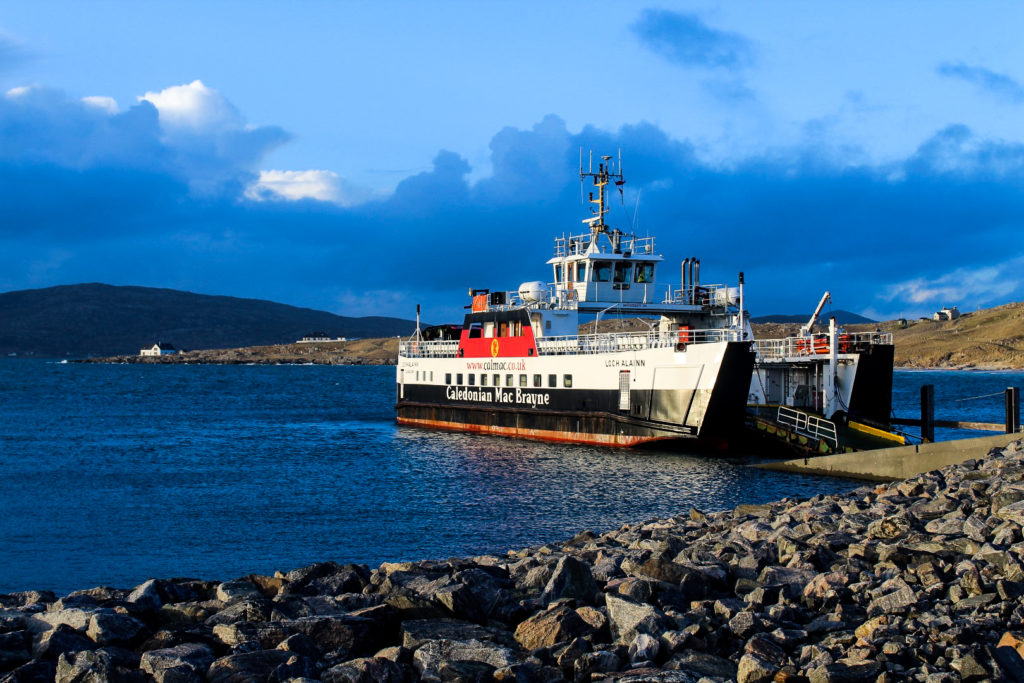
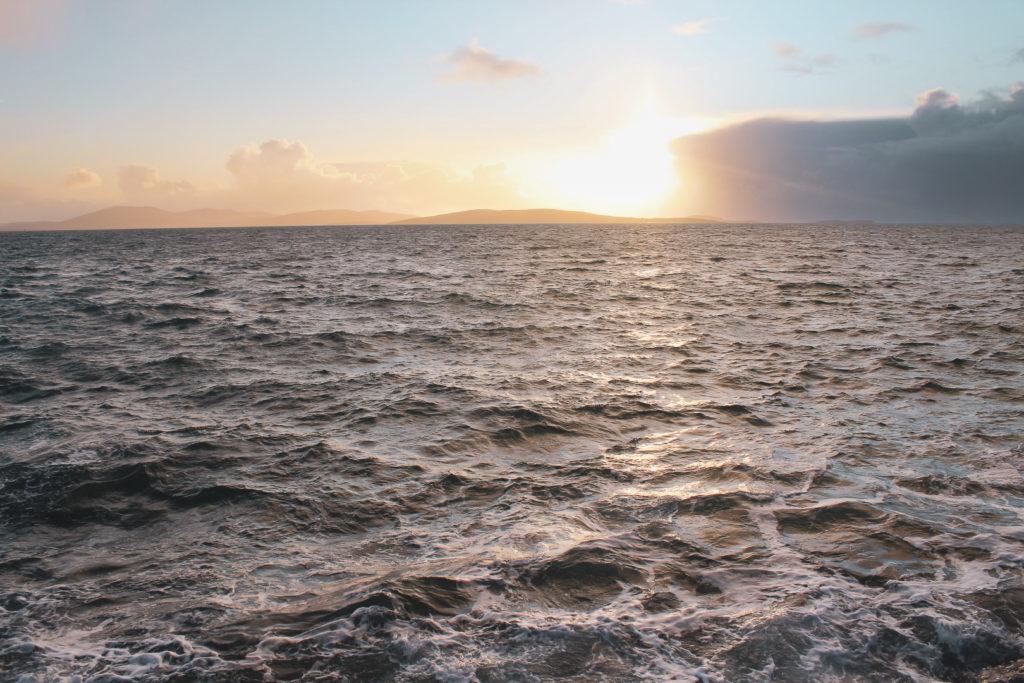
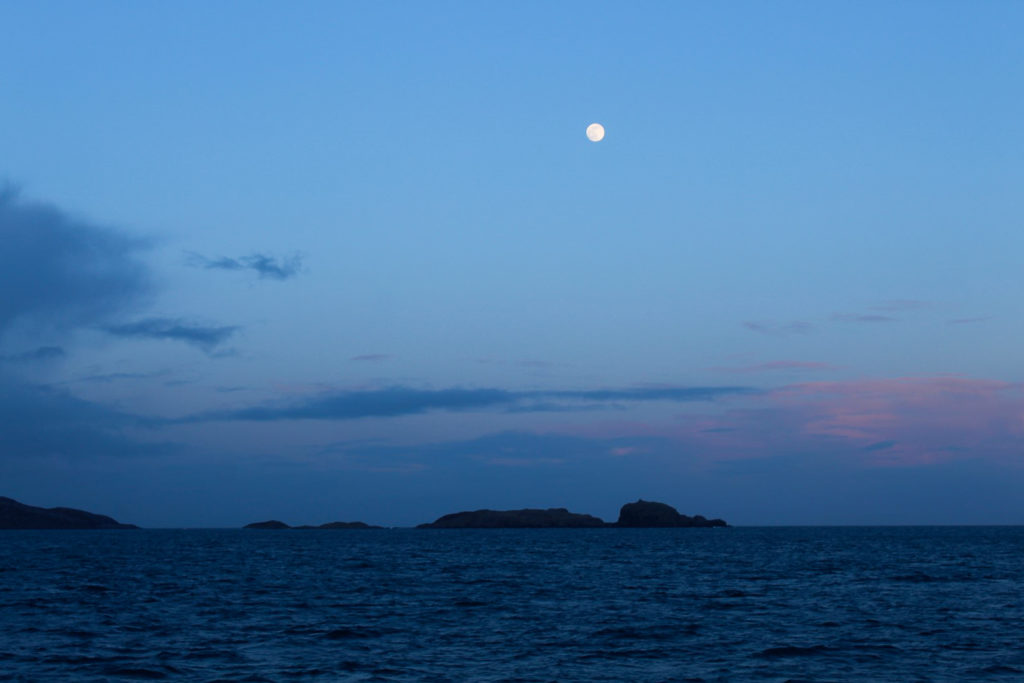
Castlebay and Kisimul Castle
Arriving on Barra, we drove along the road that circles the island to Castlebay, the main village on the island. It was getting late, so we drove straight to a parking lot at the small harbour where we spent the night in our little rental car. We woke up early the next morning as it was supposed to rain heavily from 12 PM, so we wanted to get the most out of the morning.
First up was a walk around Castlebay, which is beautifully situated at a bay that is dominated by Kisimul Castle, a medieval castle built on a small rocky islet (the name is Gaelic and means “Castle island”). No datable artifacts or architctural features were discovered during the archaeological excavations, so it’s unknown exactly when the castle was built, however, there are documentary records of the castle from as early as the mid-16th century.
The castle was used as the seat of the Clan MacNeil, a local clan that engaged in piracy on the Outer Hebrides. It was abandoned in 1838 and its condition deteriorated and some of the rocks apparently ending up as pavestones in Glasgow. 100 years later, most of Barra including the remains of the castle were purchased by the then chief of Clan MacNeil, and the castle was partially restored.
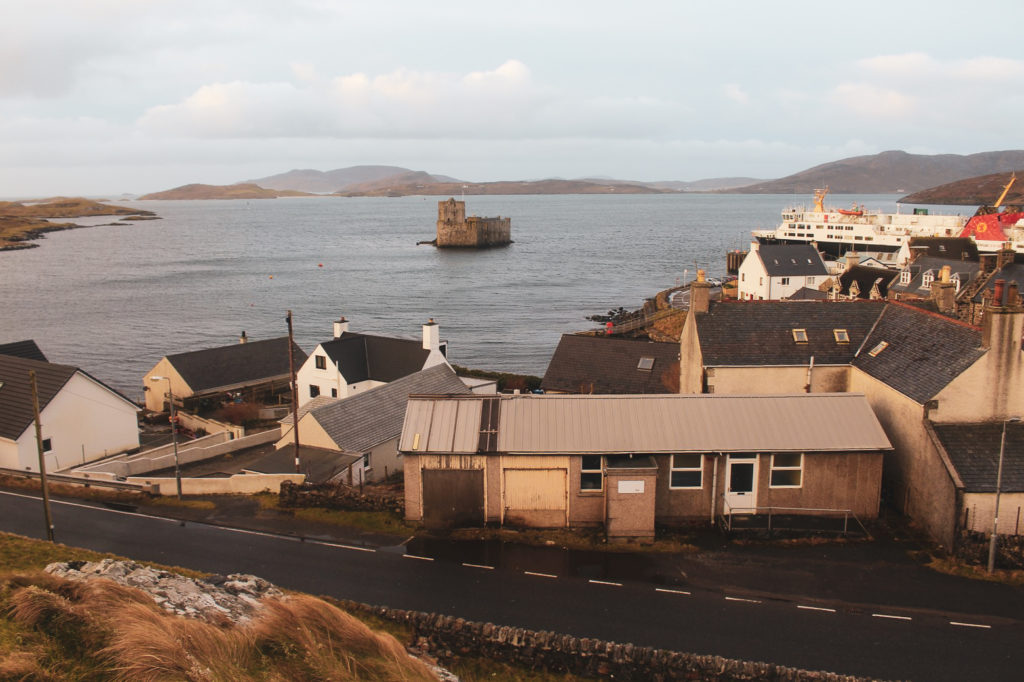
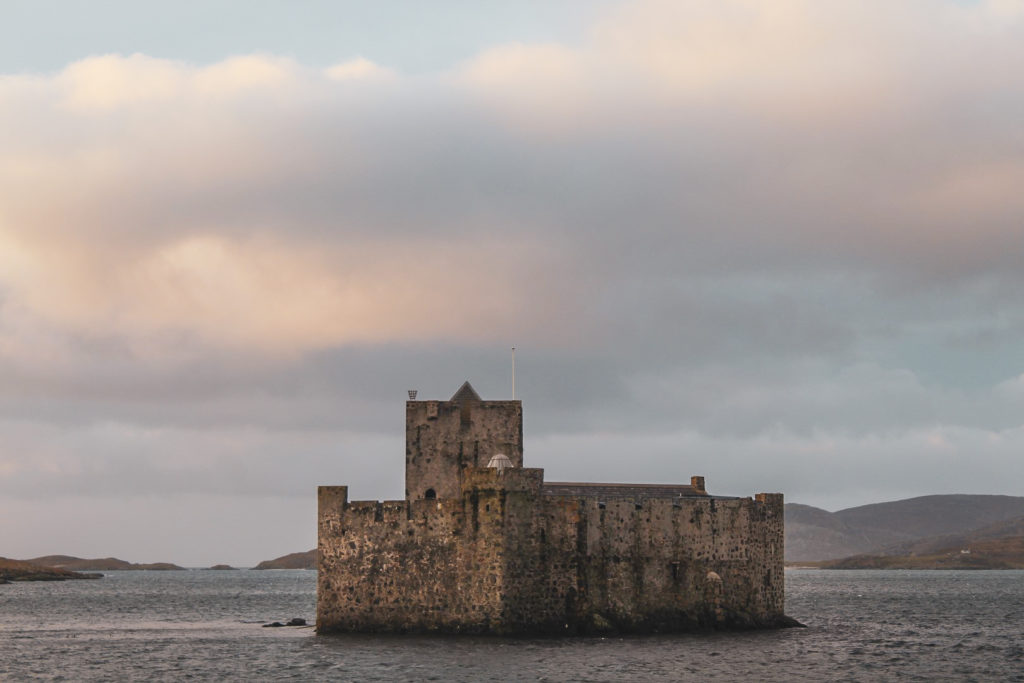
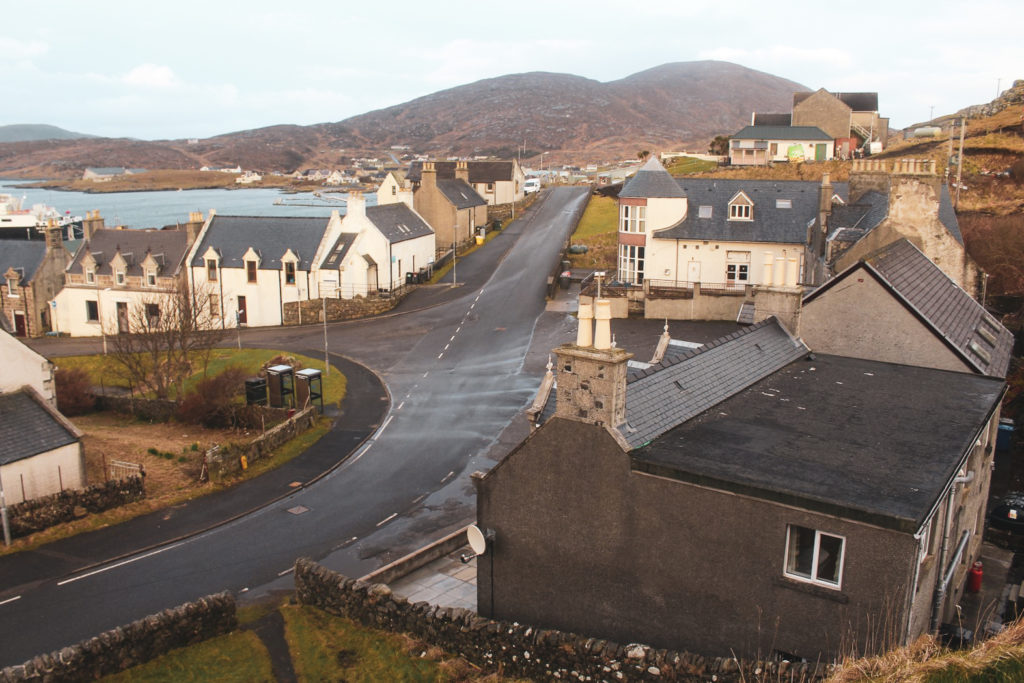
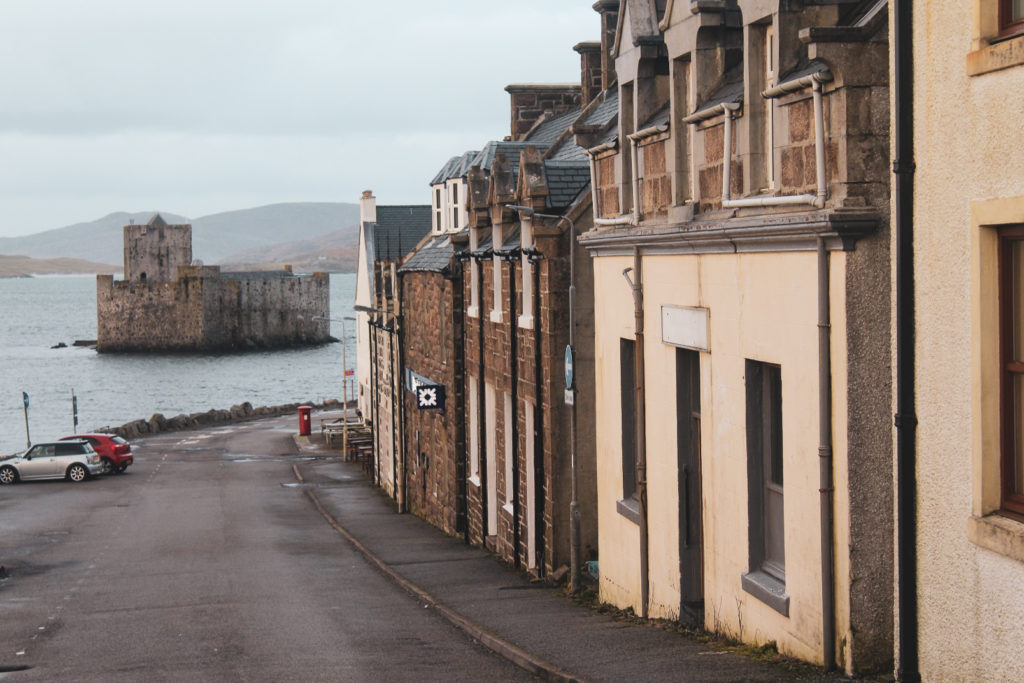
Over the causeway to Vatersay
Three kilometres from Castlebay sits the 200-metre long causeway that links Barra with the smaller island of Vatersay, which is the southernmost inhabited island in the Outer Hebrides, and also home to the westernmost village in all of Scotland. The island is actually composed of two rocky islands that are linked by an isthmus that consists of low sand dunes and long, white sand beaches.
It didn’t take long to walk through the tiny village of Vatersay, and then we enjoyed a stroll along the two beaches of the isthmus. On one side, the ocean was calm and the beach nice and sandy, and on the other side, with just a road separating them, the ocean was rough and the beach rocky. A world of difference!
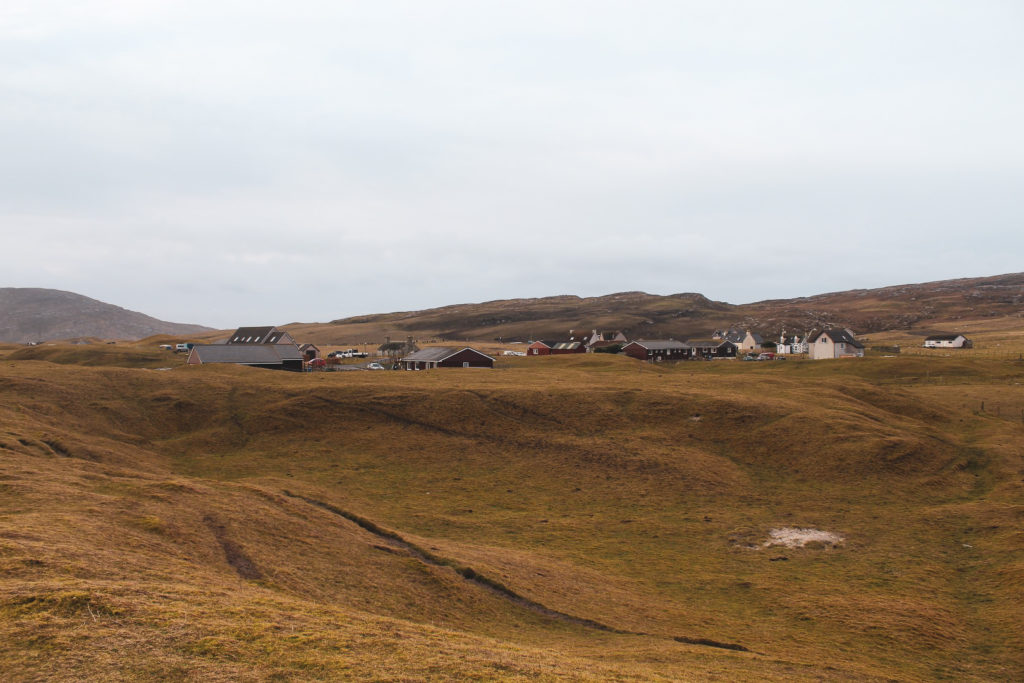
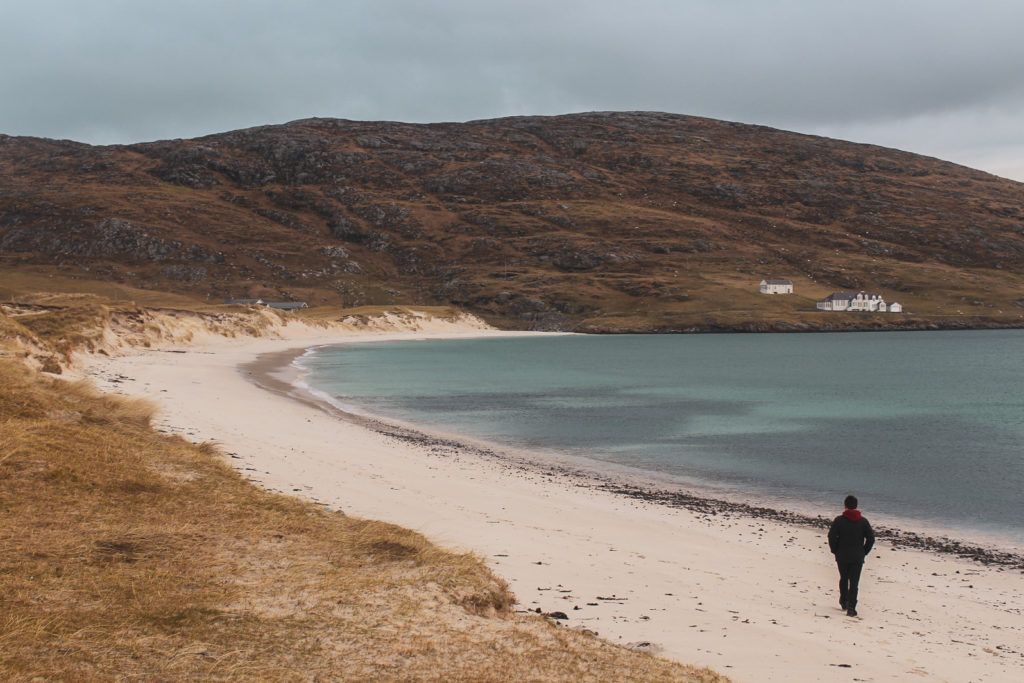
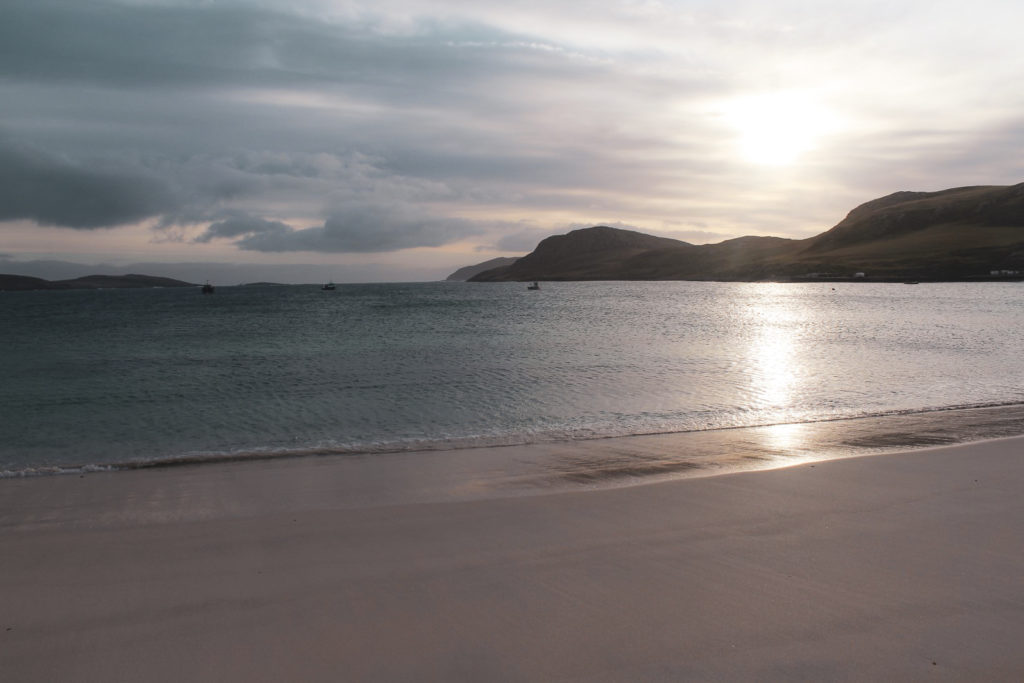
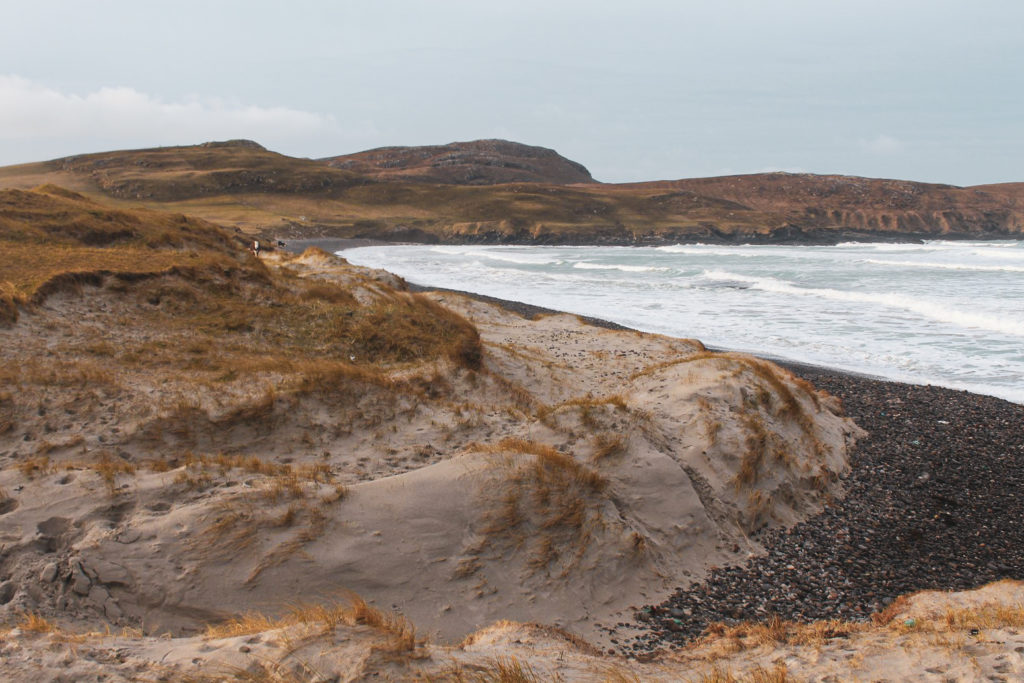
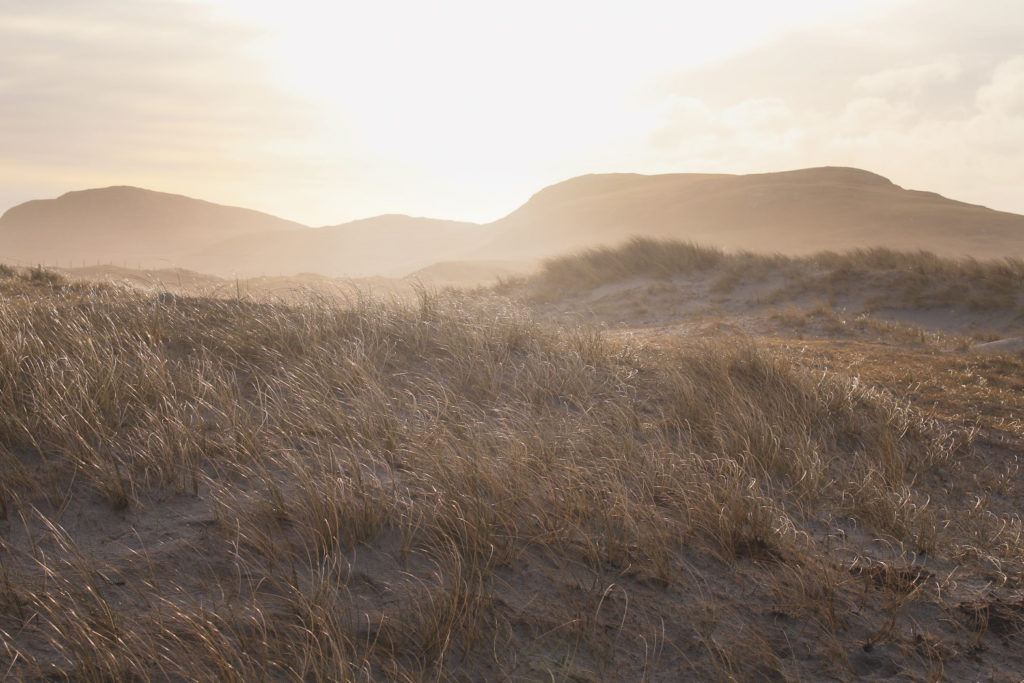

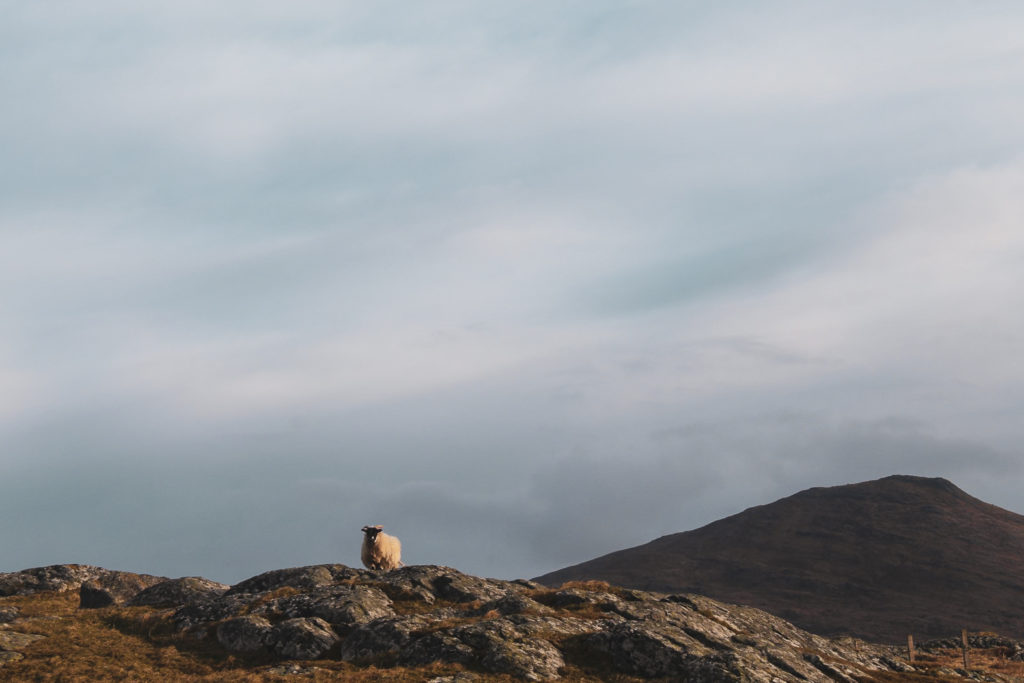
Dun Cuier, an Iron Age dun in the hills of Barra
Back on Barra, we drove along the circular road until we reached the Cuier cemetery. From there, we hiked up into the hilly and uninhabited interior in search of a well-preserved Iron Age dun (or fort) known as Dun Cuier that was in use from the 4th to the 7th century AD.
Finding it was more difficult than we’d imagined, and it was by pure luck that my brother spotted it. Although I’ve seen more complete duns around Scotland, it was well worth the hike up, if not only for the breathtaking views.

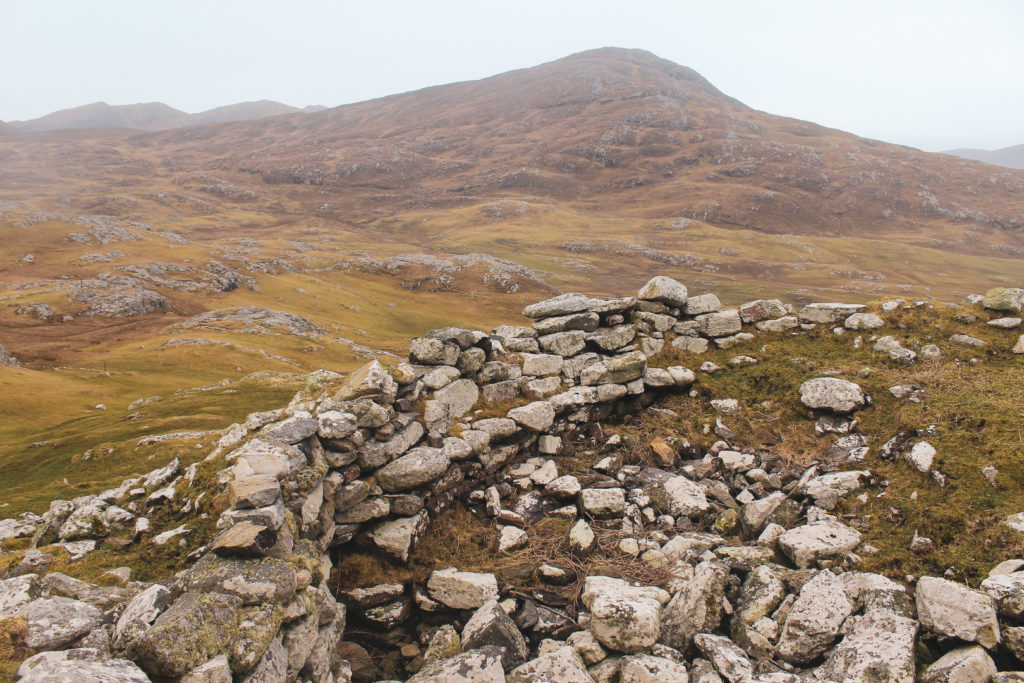
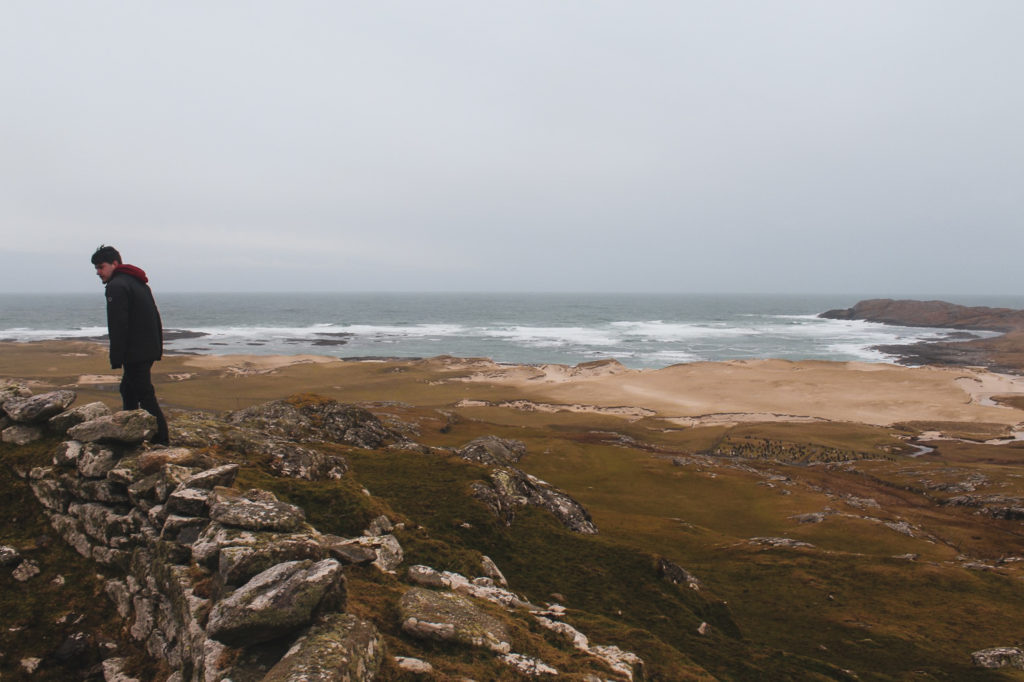
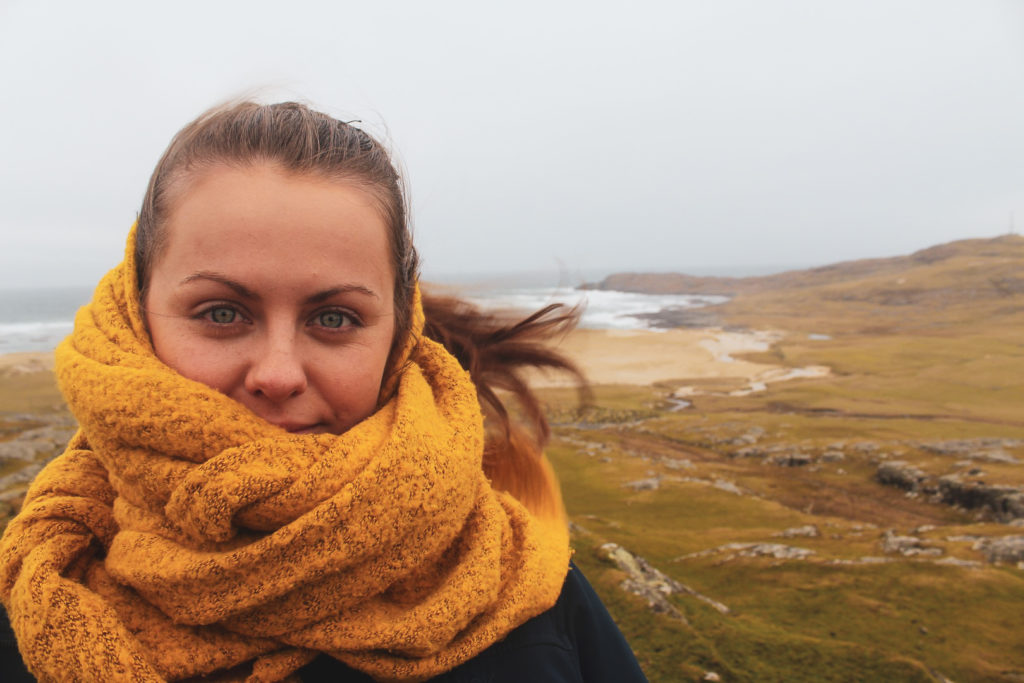
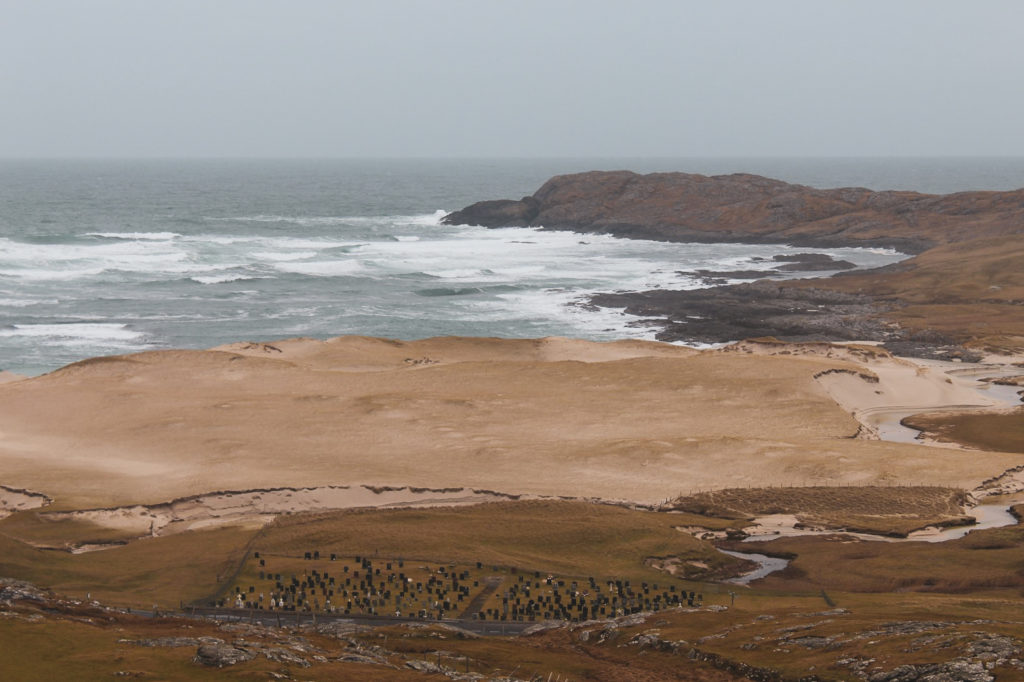
The only tidal beach airport in the world
The main thing we came to Barra for was actually its airport! It may sound like a strange reason, especially since we’re not plane spotters, but Barra Airport is rather special. It’s a tiny airport with a runway on the tidal beach of Traigh Mhòr, meaning that flights can only land and takeoff during low tide. At high tide, the runway is under the sea! Apparently, it’s the world’s only airport with scheduled flights that uses a tidal beach as a runway!
We bought some hot drinks and fries in the airport café and waited for 11.30 AM when the first flight of the day was scheduled to land. It arrived 12 minutes early and we weren’t prepared, so we rushed to a window when we heard the noise and only just managed to see the plane land on the sand. It was truly a spectacular (and weird) sight!
With time to kill before the next scheduled landing that we also wanted to see, we drove back to Castlebay to do a bit of gift shopping. The wind had picked up and it was raining heavily when we returned to the airport, so we just sat in the car and waited. And waited. The plane was really late, so we went into the airport to see if it had been cancelled, and in the same moment, we heard it. We ran outside and made it just in time to witness our second landing! I’m surprised the pilots even managed to land on a beach in such awful weather!
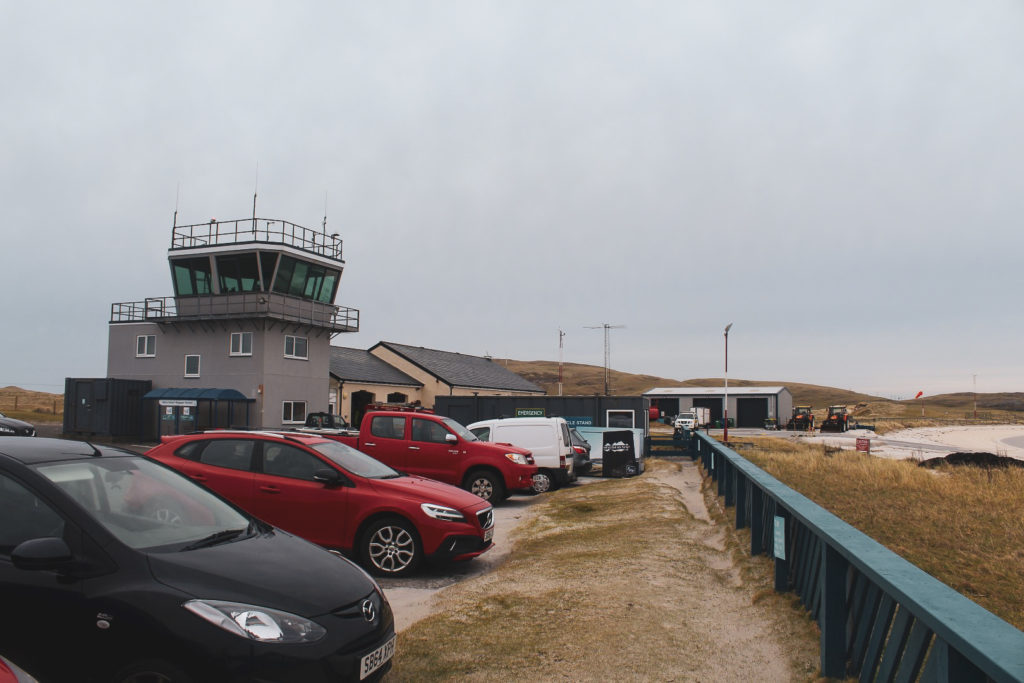

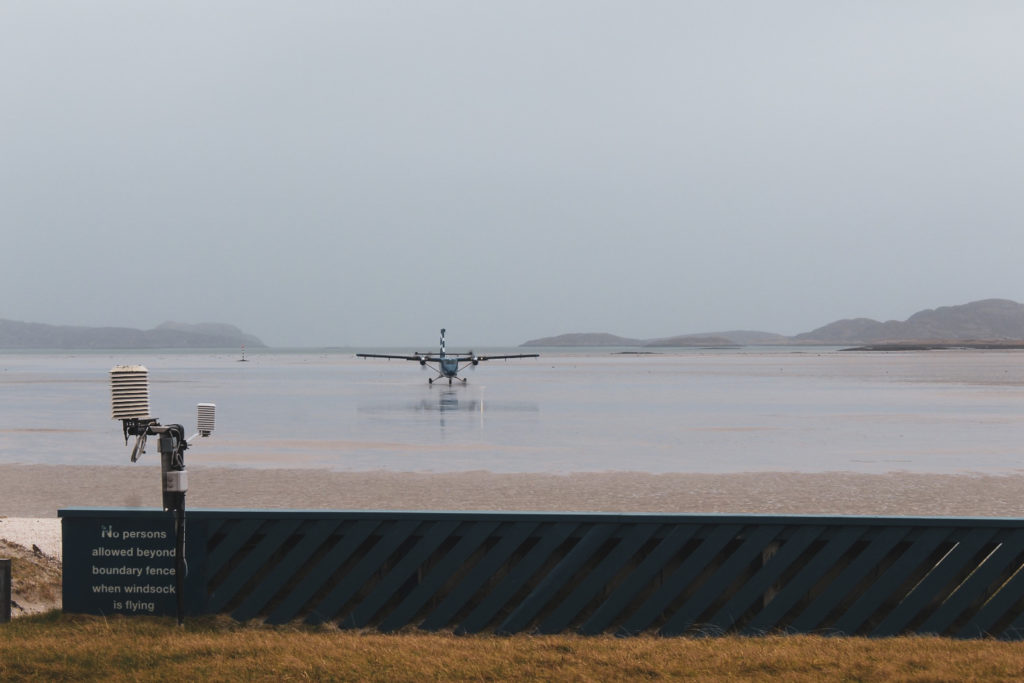
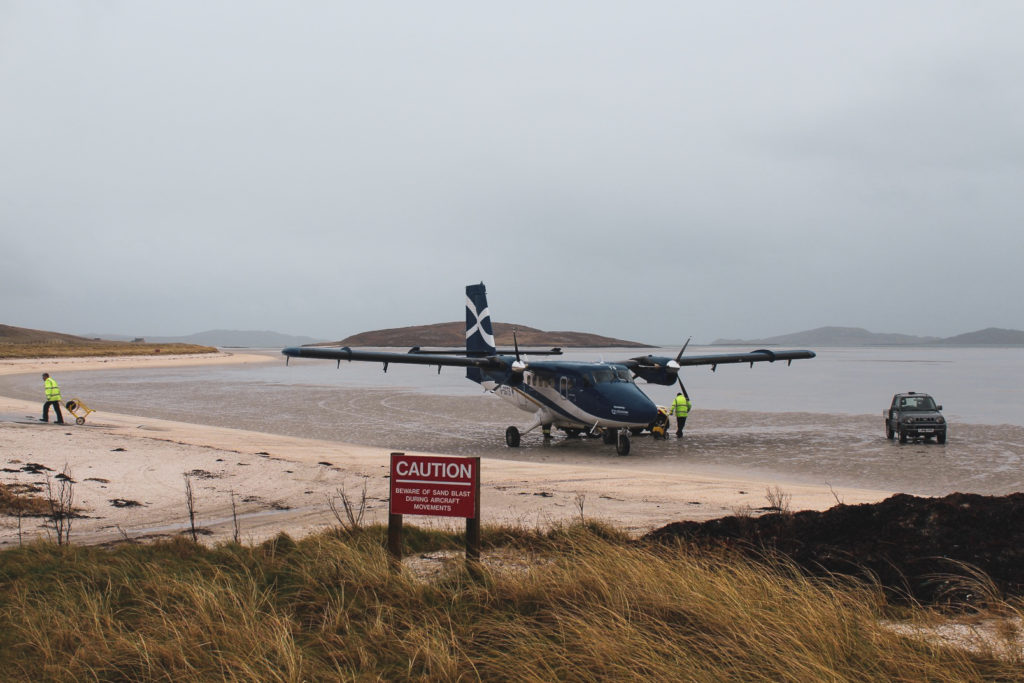
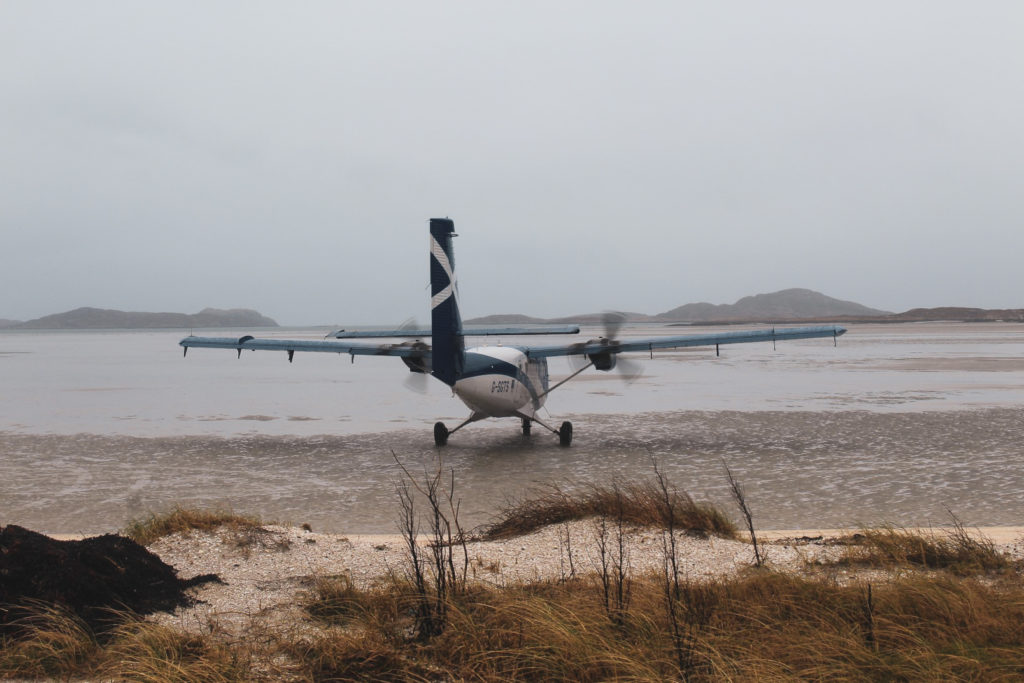
The weather put a stop to our plans of climbing Heaval, the highest hill on Barra at 383 metres above sea level, and there is not much indoor activity going on on the island. So we just headed to the ferry terminal and waited for our ferry back to Eriskay that left a few hours later.
Despite the bad weather, we saw a great deal of Barra and Vatersay, and who knows, maybe someday we’ll be back to explore the hilly interior! And maybe we’ll even arrive by plane – that would be a pretty exciting experience!


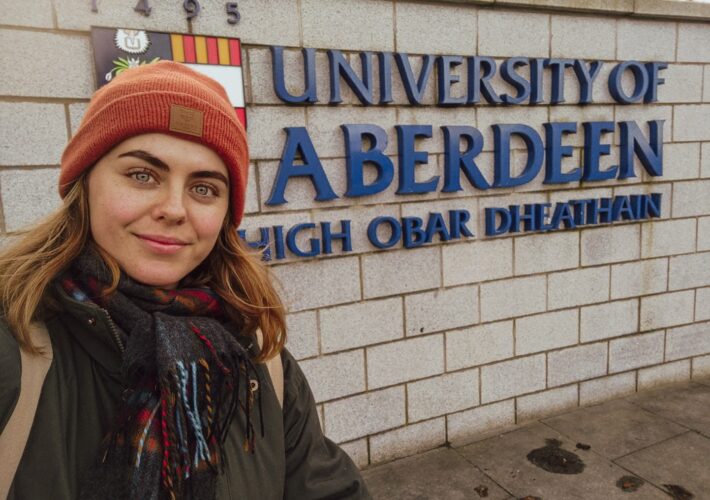

Leave a Comment